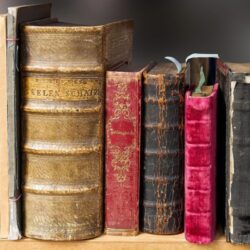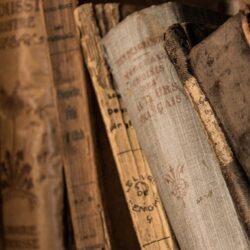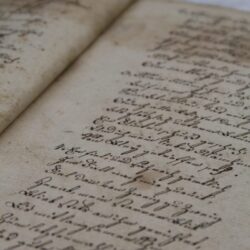'The History of Gwent from the birth of Llywelyn ap Gruffudd until the Present Time' and 'The Tredegar Diaries of John Davies'
Author – Thomas Watkins (Eiddil Ifor)
Author – John Davies (Brychan)
2 separate items in one package
A WINNING ESSAY IN THE ABERGAVENNY EISTEDDFOD 1836
The History of the South Wales Iron Industry
Author – Thomas Watkins (Eiddil Ifor)
A WINNING ESSAY IN THE ABERGAVENNY EISTEDDFOD 1837
The History of Blaenau Gwent
Author – Daniel Lewis (Ifor Gwent)
A WINNING ESSAY IN THE ABERGAVENNY EISTEDDFOD 1838
… a little bit about the authors of the essays above
BIRTH
Thomas Watkins was born in Pwll-yr-Hyward, Llanfoist, Monmouthshire on May 1st 1801. His father had worked in Abertillery but returned to Llanfoist to work in the limestone quarries belonging to the Blaenafon iron works. The family were members of the Baptist chapel in Llanwenarth.
WORK
Thomas Watkins kept the White Hart tavern in Blaenafon before working as a weigher in the iron works of Blaenau Gwent. After the death of hisd wife in 1859 Thomas returned to Blaenafon to keep the Three Cranes tavern for the remainder of his life.
CYMREIGYDDION Y FENNI
He was an original and leading member, in its early years, of the Abergavenny based group of people, Cymreigyddion y Fenni, who established the series of Eisteddfodau that created such a stir in Gwent between 1833 and 1854.
PRIZE-WINNING ESSAYS
Thomas Watkins was a regular competitor in the Abergavenny Eisteddfodau and won many prizes for his essays, of which this is one. He is best known for his history of Llanfoist parish – Hanes Llanffwyst – which won first prize in the first Abergavenny eisteddfod in November 1834. He was not as successful as a poet but he certainly was as an essayist in these eisteddfodau, winning competions on a dozen occasions. Nine of his essays survive, five in the National Library of Wales, Aberystwyth, and four in Cardiff Central Library.
BIRTH
John Davies was born in 1784 in Llanwrthwl parish, north Breconshire. His family was poor and his father scraped a living as a labourer. Little is known of his early life except that he received very little schooling and at some time he left his isolated rural area for Swansea.
WORK
From Swansea he went to sea for several years, during which time he learned to read and write, self-educating himself in English, Welsh, a wide range of knowledge, and in book-keeping skills that were to give him plenty of employment later in Tredegar. His father had died during his time at sea and in the meantime, his mother and brothers had moved to Tredegar.
At the start of the available diary period John was married to Margaret Morgan and was a bookseller and publisher in the town. He was also a promoter of friendly societies, the Oddfellows in particular, and an office holder in some of them, either as secretary or treasurer.
DIARIES
He was an inveterate diary keeper and some of his diaries have survived. They are written almost wholly in Welsh, and can be read in the Cardiff Central Library. Unfortunately, the surviving diaries do not cover the first twenty five years of his life in the town. Nor are the four volumes which do exist continuous as there are gaps for some years, but they do span from 1831, by which time he was already into middle age, to just before his death in 1864. The diaries amount to over two hundred pages of handwritten entries from a time when Tredegar was very much growing and prospering.
The diaries reveal that he kept the books for savings clubs and several businesses in the town, and earned small amounts by various writing tasks for others. This was a time when the majority of the population were illiterate, yet would have relatives in other parts of Wales that they needed to keep in contact with. In particular, there were significant number of the town’s sons and families who had emigrated to America having learned their industrial skills in Tredegar, and wanting letters from home.
Very little is known about Daniel Lewis. In the definitive work on the Abergavenny Eisteddfodau by Mair Elvet Thomas: Afiaith Yng Ngwent, Hanes Cymdeithas Cymreigyddion y Fenni 1833-1854, 1978, University of Wales Press, she notes: ‘I have not been able to discover any information about Daniel Lewis, Ifor Gwent, except for that fact that he worked in Coalbrookvale Iron Works [ie.Nantyglo], and that he won twice at the Abergavenny Eisteddfodau in 1836 and in 1838.
I have tried to discover more about him but with limited success’. In my reading of other Gwent manuscripts of the same period, such as the diaries of John Davies – Brychan of Tredegar, the several manuscripts by T.E.Watkins, Eiddil Ifor of Llanffwyst, all of which are in Cardiff Library, I have come across a Daniel Lewis and a David Lewis – Ehedydd Gwent, the both from Blaenau Gwent and the implying that they were brothers. If indeed they were, then Daniel Lewis is a son of a former vicar of Llenwenarth and Aberystruth or Blaenau Gwent parish. Thomas E. Watkins, one of the founder members of Cymreigyddion y Fenni and a prolific competitor himself in these Eisteddfodau, refers to a Daniel Lewis of Blaenau Gwent advising and accompanying Archbishop William Coxe when he made his solo tour in Monmouthshire in 1799. Though one cannot be certain from the data currently available, it seems very likely therefore that the author of this history was indeed a local lad from the very parish described in this history.
Colin Morgan
Cymreigyddion Y Fenni.
Ten Eisteddfodau between 1834 and 1853
CYMREIGYDDION Y FENNI
In the first half of the 19th Century a remarkable group of people came together in Gwent to form a society to promote love of the Welsh language and its cultural expressions by way of holding Eisteddfodau. The society was known as the Cymreigyddion Y Fenni.
EISTEDDFODAU
Between 1834 and 1853, ten eisteddfodau were organised by this society. They were all held in Abergavenny and sponsored by Augusta Hall, the famous Lady Llanofer, also known by her bardic name Gwenynen Gwent.
Lady Llanofer is well known for creating the image of what came to be regarded as the traditional Welsh costume, as well as for her support of Welsh harp music and folk songs.
In her backing of the Abergavenny eisteddfodau, Lady Llanofer was supported by her husband, Sir Benjamin Hall (of ‘Big Ben’ fame) and by Rev. Thomas Price, “Carnhuanawc”.
The substantial prizes offered at the Abergavenny eisteddfodau, (sometimes as much as eighty guineas) attracted major Welsh literary figures and European Celtic scholars as competitors.
Augusta Hall, Lady Llanover
Gwenynen Gwent – the Bee of Gwent
Augusta Hall, Baroness Llanover was a Welsh heiress and best known as a patron of the Welsh arts. She was born Augusta Waddington in 1802, near Abergavenny and was heiress to the Llanover estate in Monmouthshire. In 1823, she married Benjamin Hall and their marriage joined the large south Wales estates of Llanover and Abercarn.
GWENT ARCHIVES
Discover a little more about Lady Llanover

Abergavenny Eisteddfod 1834
Eiddil Ifor’s Medal
In the Museum at St Fagans there’s a very good collection of medals and other prizes won in the eisteddfodau of Cymreigyddion Y Fenni. This is an example of a medal the essayist, Eiddil Ifor (see above) received in 1834. Eiddil Ifor competed regularly and there are probably a good half-dozen of the medals he won in the museum.
The Abergavenny Eisteddfodau gave prominence to essays on subjects associated with Welsh history, both local history such as that of Abergavenny and the area, and of Welsh history in a broader sense.
KEEPING WELSH HISTORY ALIVE









